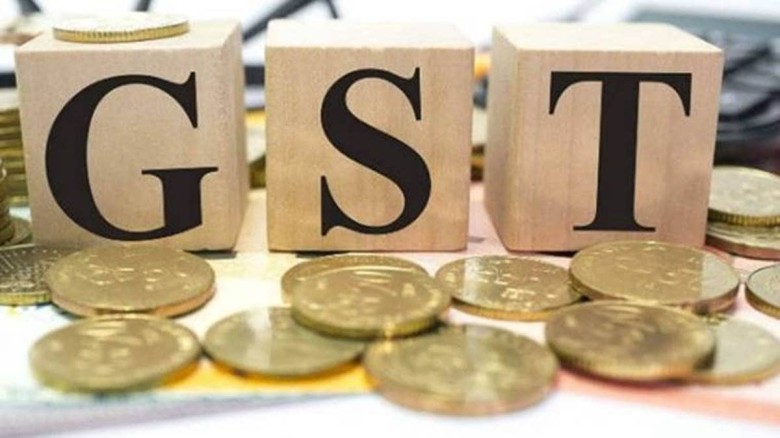Regional

92 percent of these 143 goods are planned to be moved from the 18 percent tax sabs to the highest 28 percent slab.
Digital Desk: The GST Council, the governing body for the indirect tax structure, has asked input from states on raising the rates on 143 products as part of a proposed rate rationalization under the Goods and Services Tax (GST) rule to boost revenues, reports said.
According to sources, these items include papad, gur (jaggery), power banks, watches, suitcases, handbags, perfumes/deodorants, colour TV sets (below 32 inches), chocolates, chewing gums, walnuts, custard powder, non-alcoholic beverages, ceramic sinks, washbasins, goggles, frames for spectacles, leather apparel and clothing accessories.
92 percent of these 143 goods are planned to be moved from the 18 percent tax sabs to the highest 28 percent slab.
Several of these planned rate hikes are a reversal of the Council's rate-cut decisions from November 2017 and December 2018, made in the run-up to the 2019 general elections.
Notably, perfumes, leather garments and accessories, chocolates, cocoa powder, beauty or make-up preparations, fireworks, plastic floor coverings, lamps, sound recording equipment, and armed tanks rates were reduced in November 2017 in Guwahati but are currently scheduled to be raised again. Similarly, in the December 2018 meeting, GST rates on items such as colour TV sets and monitors (below 32 inches), digital and video camera recorders, and power banks were decreased, but this may now be changed.
Reportedly, GST rates for goods like papad and gur (jaggery) may rise from zero to five percent. Leather apparel and accessories, wristwatches, razors, perfumes, pre-shave/after-shave preparations, dental floss, chocolates, waffles, cocoa powder, coffee extracts and concentrates, non-alcoholic beverages, handbags/shopping bags, as well as house construction items such as ceramic sinks, washbasins, plywood, doors, windows, and electrical apparatus (switches, sockets, and so on) may see the GST rate raised to 28 percent from 18 percent.
The GST rate for walnuts could be raised to 12% from 5%, custard powder to 18% from 5%, and wooden table and cookware to 18% from 12%.
Several of these suggested rate changes would be a reversal of the GST Council's rate-cut choices made in the run-up to the 2019 general elections.
In a meeting in Guwahati in 2017, the highest GST rate was lowered by 75%, with only 50 products remaining in the 28% slab and 178 items removed from the list of 228 items and a rate reduction for restaurants. The revenue loss from these measures was estimated to be over Rs 20,000 crore at the time.
Within a year of the GST's implementation in July 2017, the GST Council slashed rates for one out of every four commodities. The GST rate decreases on around 350 products out of 1,211 total items in the five major categories of zero, 5%, 12%, 18%, and 28% resulting in a revenue loss of roughly Rs 70,000 crore in a year, according to estimates.
As per reports, the GST council has issued a proposal for rate modifications to states, asking for their comments.
"For the rate changes, states were asked for their input. Some commodities should suffer a rate reversal if the makers have not passed the benefits of the rate cuts to customers. However, for other things of frequent usage, the pricing should remain unchanged," a state government official stated.
The rate changes may be phased in, as many states have expressed reservations about the timing of the proposed changes, given the rising inflation trend. In March 2022, wholesale price index-based inflation reached 14.55 percent, while retail inflation reached 6.95 percent, a 17-month high.
Meanwhile, economists said that there might be a pattern of WPI inflation collapsing into retail inflation due to stronger pricing power with corporates due to market inefficiencies triggered by the Covid-19 pandemic.
GST collections have been substantial in recent months, indicating development in the organized sector and increased inflation rates, as well as anti-evasion initiatives such as action against false billers.
In March, GST receipts hit a new high of Rs 1.42 lakh crore for sales in February, up 14.7% from March 2021 and 45.6 percent higher than March 2020.
The 45th GST Council meeting, held in Lucknow in September 2021, highlighted revenue stream inconsistencies resulting from previous rounds of rate rationalization. After the meeting, Union Finance Minister Nirmala Sitharaman said that the neutral revenue rate had dropped to 11.6 percent from 15.5 percent.
"The Revenue Neutral Rate of 15.5 percent has been reduced to 11.6 percent as, of course, the Council has reduced the rate of many, many items in its knowledge over the years, and not only the reduction, but the resulting refund due to the inversion have resulted in the collection coming down from revenue neutral levels. As a result, we believe the total collection has decreased. We can also see why it has decreased. However, when we add it all up, we can see that we are well below the revenue neutral rate," she had noted.
After this, two GoMs were constituted, one to look at rate rationalization and inverted duty structures, and the other to look at GST system changes through compliance measures, data analytics, and IT systems.
According to a September 2019 report by the Reserve Bank of India (RBI), the GST Council's rate rationalization reduced the effective weighted average GST rate from 14.4% to 11.64% at the time of launch. However, it claimed that increased buoyancy was accomplished by broadening the tax base and removing errors.
Leave A Comment